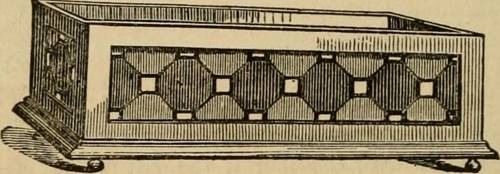
FAQ About Indoor Plant Revival Techniques

What is the first step to revive a neglected indoor plant?
The first step to revive a neglected indoor plant is to assess the plant's overall condition, including its leaves, stems, and soil. Check for signs of dehydration, overwatering, or pests. This initial evaluation will help you determine the specific needs of the plant, such as water, light, nutrients, or pest control.

How can I tell if my indoor plant needs rehydration?
You can tell if your indoor plant needs rehydration by examining the soil and leaves. If the soil feels dry and the leaves are wilting or drooping, it is a sign that the plant requires water. However, ensure the soil is dry by touching it a few inches below the surface to confirm soil moisture accurately.

What should I do if my indoor plant is overwatered?
If your indoor plant is overwatered, allow the soil to dry out completely before watering again. Remove the plant from its pot if necessary and gently dry the roots with a paper towel. Improving drainage by adding perlite or using a pot with drainage holes can also prevent future overwatering.

What are the best methods to remove pests from indoor plants?
To remove pests from indoor plants, you can use insecticidal soap or neem oil, which are safe and effective. Applying these treatments according to the product instructions will help eradicate common pests like aphids, spider mites, and mealybugs. Regularly cleaning the leaves with a damp cloth can also prevent infestations.

How can I replenish nutrients for a neglected indoor plant?
To replenish nutrients for a neglected indoor plant, use a balanced liquid fertilizer diluted to half strength. Apply the fertilizer during the plant's growing season, typically spring and summer, to avoid over-fertilizing, which can burn the roots. Regular fertilization will restore essential nutrients and promote healthy growth.

Is trimming necessary for reviving a neglected indoor plant?
Trimming is often necessary when reviving a neglected indoor plant. Pruning away dead, yellowing, or damaged leaves and stems helps redirect the plant's energy towards new growth. Use clean, sharp scissors or pruning shears to avoid tearing or further damaging the plant.

How important is light in reviving indoor plants?
Light is crucial for reviving indoor plants as it is essential for photosynthesis. Ensure the plant is receiving the right amount of light based on its specific needs. Some plants thrive in bright, indirect light, while others require low light conditions. Adjust the plant's location as needed to optimize its light exposure.

What steps should I take to revive a wilting plant?
To revive a wilting plant, first, assess whether it is due to underwatering or overwatering. Adjust the watering schedule accordingly, and ensure the plant is placed in a suitable location with adequate light. Trimming dead foliage and repotting if the roots are bound or the soil is compacted can also help.

Can misting help in reviving indoor plants?
Misting can be beneficial in reviving indoor plants, especially those requiring high humidity. It helps increase humidity around the plant, which can be crucial for tropical plants. However, misting should not replace regular watering and should be done with care to avoid fungal issues.

When is it time to repot a neglected indoor plant?
Repotting a neglected indoor plant may be necessary if it shows signs of being root-bound, such as roots growing out of the pot's drainage holes or circling the root ball. Compacted soil that retains water or lacks nutrients also indicates that repotting is needed. Choose a pot one size larger with fresh soil to give the plant room to grow.

How can I identify a nutrient deficiency in my indoor plant?
Nutrient deficiencies in indoor plants can manifest through symptoms such as yellowing leaves (often nitrogen deficiency), purplish leaves (phosphorus deficiency), or browning leaf edges (potassium deficiency). Identifying the specific symptoms can help you address the issue with appropriate fertilization.

What are some signs of pest infestation on indoor plants?
Signs of pest infestation on indoor plants include visible insects like aphids or spider mites, sticky residues on leaves, wilting or yellowing leaves, and small holes or bite marks on foliage. Regularly inspecting your plants can help detect these signs early and allow for timely intervention.

Is it possible to save a plant with extensive root rot?
Saving a plant with extensive root rot is challenging but possible. Remove the plant from its pot, wash away the affected soil, and trim away the rotted roots with sterilized scissors. Allow the healthy roots to dry, then replant in fresh, well-draining soil. Reducing watering frequency may also help prevent future root rot.

How do you know if an indoor plant is experiencing stress?
Indoor plants show stress through symptoms like leaf drop, discoloration, wilting, and slow growth. Stress may be due to environmental changes such as alterations in light, water, or temperature. Paying attention to these symptoms helps in adjusting the plant care routine to alleviate stress.

What is the role of humidity in indoor plant health?
Humidity plays a vital role in indoor plant health, particularly for tropical species that thrive in moist conditions. Low humidity can lead to brown leaf tips and edges. Increasing humidity using a humidifier, pebble trays, or regular misting can help improve plant health.

Can over-fertilizing damage indoor plants, and how can it be resolved?
Yes, over-fertilizing can damage indoor plants by causing nutrient burn, which manifests as brown or scorched leaf edges and wilting. To resolve this, flush the soil with plenty of water to remove excess fertilizers, and reduce future fertilizing frequency or concentration.

How should I handle a plant that appears dormant?
Handling a dormant plant requires patience, as some plants naturally enter a rest period. Reduce watering and stop fertilizing during dormancy to prevent root rot. Ensure the plant still receives adequate lighting, and resume regular care as new growth appears, indicating the end of dormancy.

What can be done if an indoor plant loses all its leaves?
If an indoor plant loses all its leaves, check the roots for health. If the roots are viable, trim dead or damaged parts and continue to care for the plant with proper light and moisture conditions. Leaf loss may occur during stress but can be temporary if the plant's core is alive.

How can temperature affect the recovery of indoor plants?
Temperature significantly affects indoor plant recovery, with most plants preferring stable, moderate temperatures. Extreme cold or heat can exacerbate stress. Maintain optimal temperatures for your specific plant type, often between 65°F to 75°F (18°C to 24°C), to aid in its recovery.

Is it necessary to change the potting soil when reviving a plant?
Changing potting soil is often necessary when reviving a plant, especially if the soil is compacted, depleted of nutrients, or harboring pests. Fresh, well-draining potting mix provides a healthier environment for root development, leading to better recovery outcomes.
